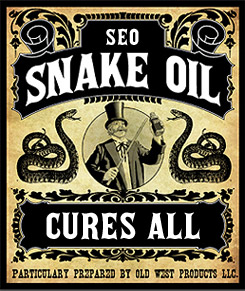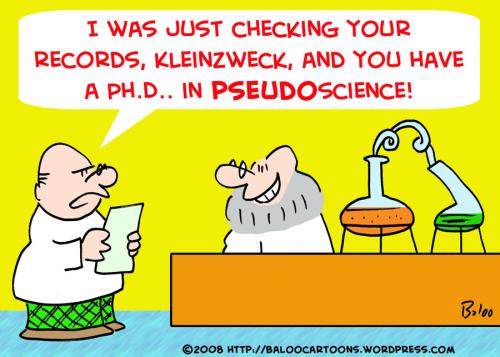 Several months ago I had dinner with two of my colleagues, a pediatrician and a clinical social worker, to iron out the details of our upcoming conference presentation. As time went by we managed to discuss every topic under the sun, yet still the subject of our presentation was sadly not on the agenda. Exhausted from working at the hospital a full day and seeing private clients afterwards, I was getting distinctly antsy as the hand clock kept climbing closer to midnight.
Several months ago I had dinner with two of my colleagues, a pediatrician and a clinical social worker, to iron out the details of our upcoming conference presentation. As time went by we managed to discuss every topic under the sun, yet still the subject of our presentation was sadly not on the agenda. Exhausted from working at the hospital a full day and seeing private clients afterwards, I was getting distinctly antsy as the hand clock kept climbing closer to midnight.
The conversation began to feel more productive when we started to touch base on our mutual clients. Mostly they wanted to hear from me, since they both share an office suite and I was the only one located off-site. So, even though we all individually frequently conferred via phone regarding clients, that was the first time all three of us got together in the same room to discuss them. Quickly, I rattled off each of my clients’ progress in therapy, until I got to D, and paused. Oh, don’t get me wrong I am very proud of my work with D, whom I’ve been working with for several years, and who went from being limitedly verbal, severely echolalic, and “autistic like” at the age of 4-5 to fluent complex sentence speaker, fledgling problem solver, and a little charmer by the age of 6-5. Yet something was still bothering me regarding D’s performance that I couldn’t put my finger on. Despite the absence of a particular diagnosis (e.g., ASD) and significant gains, his issues with attention and cognition persisted, and his progress was still halting and inconsistent, even with rigorous language therapy and supplementary academic instruction at home 4 times a week.
In my desperation I have already considered and mentally rejected a number of referrals (“No it doesn’t seem to be a psychiatric issue”, “Yes he can benefit from a neurological but should I refer him to a psychological assessment first, could it be an IQ issue?” I pondered out loud as I shared my concerns with my colleagues. Both of them haven’t seen him for about 6 months so the clinical social worker immediately whipped out his chart busily looking for appropriate information, while the pediatrician started to frown, searching her memory for an “appropriate entry.” “Wait a second”, she said, “when I last saw him, during his physical exam I saw brown café au lait spots on his skin that I didn’t like at all, so I referred mom to get some blood work done but I haven’t heard from her since that time. Since you see her every week, can you please ask her to call me ASAP so I could remind her to do the blood test, as the information you are telling me makes it even more imperative that she follow up with the lab work.”
Right away, I became alert. Though the pediatrician was not stating her suspicious explicitly, through years of working with medical professionals I was familiar with the implications of what café au lait spots can potentially represent and that is neurofibromatosis. It is a neurocutaneous syndrome that leads to benign tumor growths in various parts of the body and can affect the brain, spinal cord, nerves, skin, and other body systems. In additional to all the medical implications of this syndrome (e.g., tumors becoming cancerous), it can also cause cognitive deficits and subsequent learning disabilities that affect appropriate knowledge acquisition and retention.
To me the situation was clear, no matter what the outcome, as the only team professional in contact with the parent at the time, it was my job to counsel the parent that she get in touch with the pediatrician so she can successfully pursue the recommended course of action. It may not have been the position I wanted to be in but unfortunately I knew that if this matter was left unpursued, I was left with a whole host of unanswered questions regarding further treatment options for this child.
I use the above example to emphasize the value and importance of working as part of a team to treat the “whole” child. Therapists specializing in working with children on the spectrum are most familiar with being part of a team, since they are just one of many professionals such as behaviorists, OT’s, psychologists or neurologists who are working with a child. Being part of a team is also a much more acceptable practice when a child is treated in a hospital or a rehab setting and presents with a complex disorder (e.g., is medically fragile, has a genetic syndrome, etc).
However, in our field, even outside of specialty settings (hospital/rehab) we are frequently confronted with speech or language disordered clients who stump our thinking processes, and who require the team approach (including the involvement of specialized medical professionals). Yet oftentimes that creates a significant challenge for many clinicians who are working contractually (through an agency) in school settings or in private practice. Being part of a team when one is contractor or a sole practitioner in a private practice is a much more difficult feat, especially when the clinicians are just striking out on their own for the first time.
Both interdisciplinary and multidisciplinary teamwork is oftentimes so crucial in our field. Working as part of a team allows us to collectively pursue common goals, combine our selective expertise, initiate a discussion to solve difficult problems, as well as to have professional lifelines when working on difficult cases. Different providers (neurologist, SLP, OT) see different symptoms as well as different aspects of the patient’s disorder. Consequently, different providers bring different perspectives to the table, which ultimately positively contributes to the treatment of the whole child.
Interestingly, many private speech language practitioners have wide referral networks (e.g., pediatricians, OT’s, PT’s and others who refer clients to them) yet when asked regarding frequency of contact with respect to conferences/discussions about the progress of specific clients, many clinicians draw a blank.
So how can we develop productive professional relationships with other service providers which go beyond the initial referral? I’ll be the first one to admit that it is not an easy accomplishment especially which it comes to physicians such as psychiatrists, neurologists, geneticists, or developmental pediatricians. I can tell you that while some of my professional relationships came easy, others took years to attain and refine.
In my hospital setting I work as part of a team. However, when I first started out in private practice, in a fairly short period of time I ended up having a number of clients with complex diagnoses and no one to refer them to. What complicated matters further that in contrast to them being referred to me by a pediatrician, these clients came to me first, since their most “visible issues” at the time were speech language deficits. I had to be the one to initiate the referral process to suggest to their parents relevant medical professionals, which needed to be visited in order to figure out why their children were having such complex language difficulties (among other symptoms) in the first place.
So here are a few suggestions on how to initiate and maintain professional relationships with medical service providers.
Start with doing a little research. You have worked hard to build your practice and your clients deserve the best, so locate the best medical service providers in your area. In the past I’ve had some excellent recommendations from locally based colleagues who were active on the ASHA discussion forums, other client’s parents who already did the necessary legwork, or hospital based colleagues who recommended peers in private practice. Several times I actually liked the initial medical reports I’ve received on a client so much – that I’ve referred other clients to the same doctor.
When word of mouth fails to do the trick, I turn to “Google” to provide me with desired results. Surprisingly, simply typing in “best _______in _____(name of state)” frequently does the trick and allows me to locate relevant professionals, after browsing through the multitude of web reviews.
Of course depending on the length of client treatment, you will have different relationships with different medical providers. I have collaborated for years with some (e.g., pediatrician, psychiatrist), and only infrequently spoken with others (geneticist, otolaryngologist, pediatric ophthalmologist).
Typically, when I refer a client for additional testing or consultation, in my referral letter to the physician, I request to receive the results in writing, asking the physician to also include relevant recommendations (if needed). Oftentimes, I also try to set some time to discuss the findings in a phone call in case I have any additional questions or concerns. Of course, I also send the physician (and other providers working with the child) the information from my end (progress reports, evaluations) so all of us can have a more comprehensive profile of the client’s disorder/deficit.
After all, ST’s, OT’s and PT’s are not the only ones who are dependent on information from doctors in order to do our work better. There are times when physicians need information from us in order to move further in treatment such as order specific tests. For example, just recently a pediatrician used my therapy progress report in conjunction with another provider’s, to order an MRI on our mutual client. The pediatrician had significant concerns over client’s development and presenting symptomatology, and needed to gather additional reports supporting her cause for concern in order to justify her course of action (ordering an MRI) to the HMO.
As mentioned previously there are numerous benefits to teamwork including the fact that it allows for appreciation of other disciplines, creation of functional goals for the child, integration of interventions as well as “brings together diverse knowledge and skills and can result in quicker decision making” (Catlett & Halper, 1992).
Given the above, it is important that speech language pathologists help to coordinate care and maintain relationships with other medical and related professionals who are treating the child. This will improve decision making, allow the professionals to address the child’s deficits in a holistic manner, an even potentially expedite the child’s length of stay in therapy.
References:
Catlett, C & Halper, A (1992) Team Approaches: Working Together to Improve Quality. ASHA: Quality Improvement Digest. http://www.asha.org/uploadedFiles/aud/TeamApproaches.pdf
National Institute of Neurological Disorders and Stroke (NINDS) Neurofibromatosis Information Page http://www.ninds.nih.gov/disorders/neurofibromatosis/neurofibromatosis.htm
 As a frequent participant in a variety of speech pathology forums I’ve read through countless “mini scenarios” of SLPs asking for advice regarding various aspects of therapy service provision for children with average IQ and language impairment (characterized by weaknesses in the area of listening comprehension, language processing, vocabulary acquisition, sentence formulation, as well as conversational development.)
As a frequent participant in a variety of speech pathology forums I’ve read through countless “mini scenarios” of SLPs asking for advice regarding various aspects of therapy service provision for children with average IQ and language impairment (characterized by weaknesses in the area of listening comprehension, language processing, vocabulary acquisition, sentence formulation, as well as conversational development.) Richie is an engaging 9 year old boy, who attends therapy to improve his language skills. He is compliant and cooperative in sessions and is eager to learn new information. There’s only one problem, Richie is unable to spontaneously ask questions and request clarification when he doesn’t understand the presented information. Oh, he’ll sit there quietly, intently looking at the therapist and making perfect eye contact. His entire body posture will scream at you “I am listening to you and I value what you have to say!” But when it comes to answering questions about what he’s just learned, Richie clearly doesn’t get it and has no clue on how to obtain it! He might attempt to answer the questions and stumble half way through before giving up. He might also provide a response completely unrelated to the presented question. But most of the time, much to your frustration, Richie will simply shrug his shoulders and reply “I don’t know”. This is typically when many graduate speech interns and CFs alike will ask him with barely disguised frustration: “Why didn’t tell me before you didn’t understand?” Richie will shrug his shoulders again. Oh, he is not trying to be oppositional, he really doesn’t know!
Richie is an engaging 9 year old boy, who attends therapy to improve his language skills. He is compliant and cooperative in sessions and is eager to learn new information. There’s only one problem, Richie is unable to spontaneously ask questions and request clarification when he doesn’t understand the presented information. Oh, he’ll sit there quietly, intently looking at the therapist and making perfect eye contact. His entire body posture will scream at you “I am listening to you and I value what you have to say!” But when it comes to answering questions about what he’s just learned, Richie clearly doesn’t get it and has no clue on how to obtain it! He might attempt to answer the questions and stumble half way through before giving up. He might also provide a response completely unrelated to the presented question. But most of the time, much to your frustration, Richie will simply shrug his shoulders and reply “I don’t know”. This is typically when many graduate speech interns and CFs alike will ask him with barely disguised frustration: “Why didn’t tell me before you didn’t understand?” Richie will shrug his shoulders again. Oh, he is not trying to be oppositional, he really doesn’t know!  It’s DAY 25 of my Birthday Month Giveaways and I am raffling off a giveaway by
It’s DAY 25 of my Birthday Month Giveaways and I am raffling off a giveaway by 


 I’ve been meaning to write this post for some time and have finally decided to do it now due to an increased prevalence of “non-traditional” treatment options available to parents of language impaired children.
I’ve been meaning to write this post for some time and have finally decided to do it now due to an increased prevalence of “non-traditional” treatment options available to parents of language impaired children.







 There you have it: that’s what the harm is! The toll of these quack practices can be very significant and can go far beyond the financial. So the next time someone utters the statement: “What’s the Harm in That?” consider the above information in order to make the informed decisions regarding the treatment for the most vulnerable parties involved: the children in your care!
There you have it: that’s what the harm is! The toll of these quack practices can be very significant and can go far beyond the financial. So the next time someone utters the statement: “What’s the Harm in That?” consider the above information in order to make the informed decisions regarding the treatment for the most vulnerable parties involved: the children in your care! Today’s guest post on working with middle school students comes from Zoya Tsirulnikov, MS CCC-SLP, TSSLD , an SLP from the NYC’s Department of Education.
Today’s guest post on working with middle school students comes from Zoya Tsirulnikov, MS CCC-SLP, TSSLD , an SLP from the NYC’s Department of Education.  I enjoyed
I enjoyed